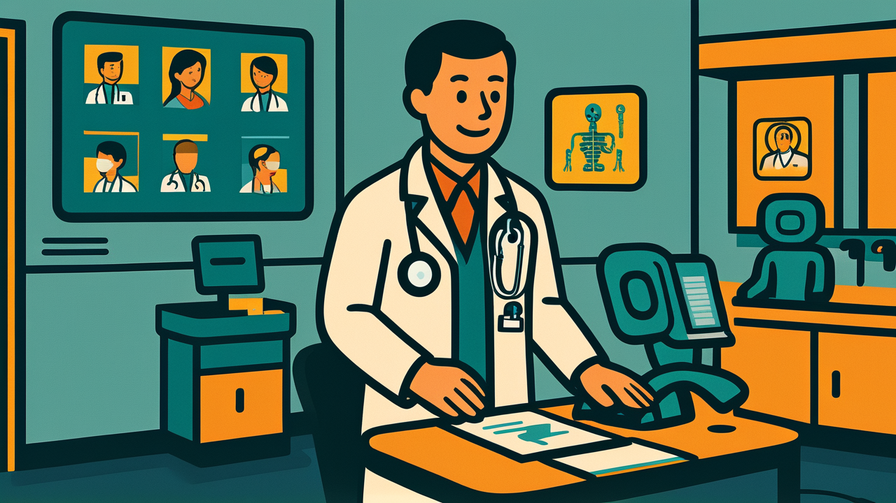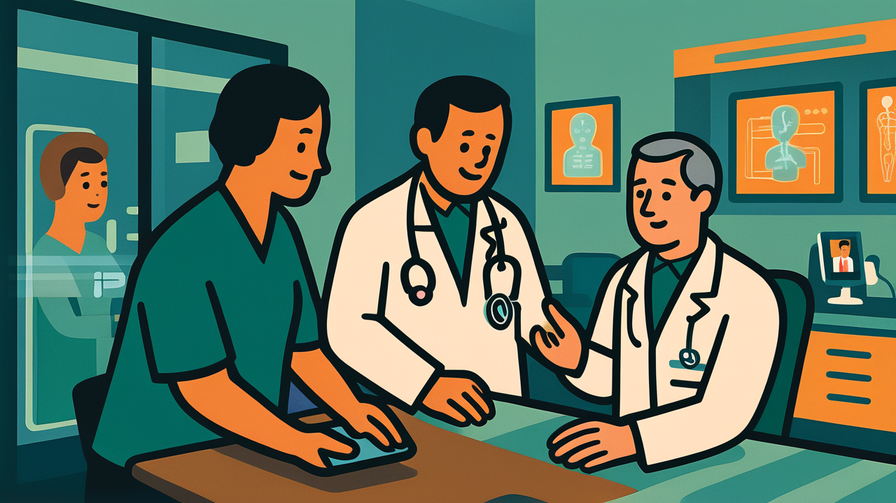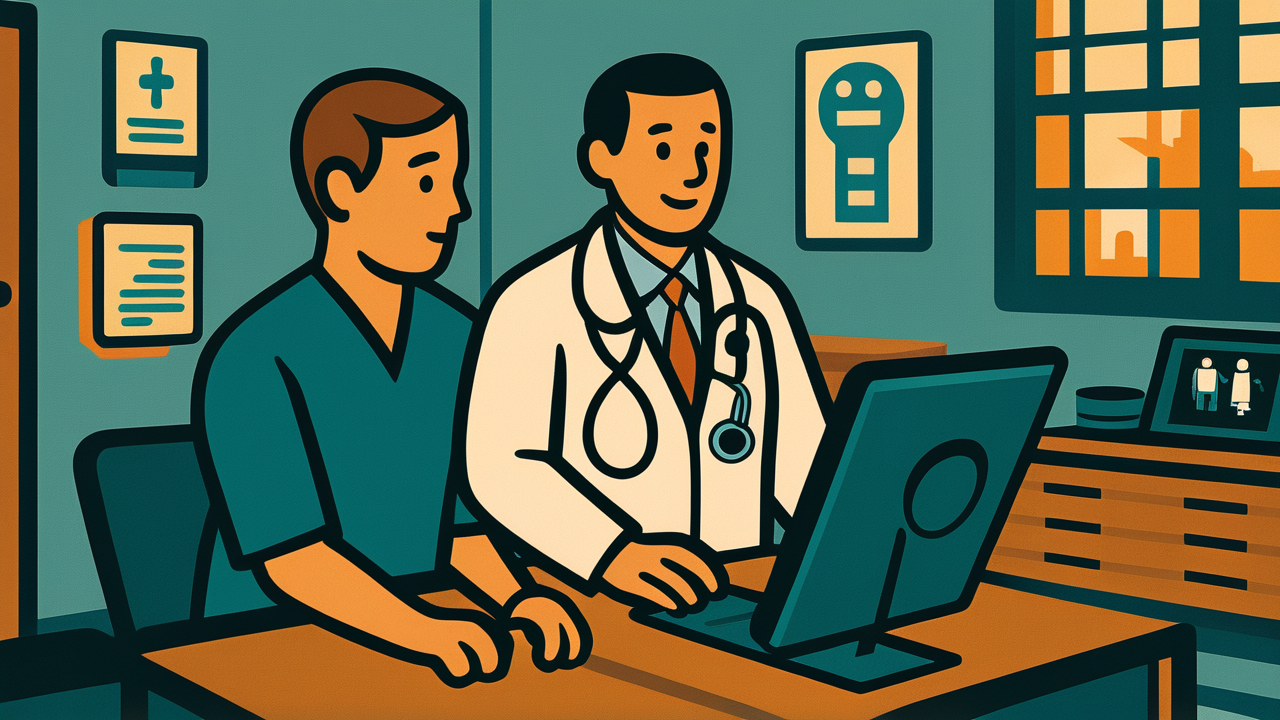[Disclaimer] This article is reconstructed based on information from external sources. Please verify the original source before referring to this content.
News Summary
The following content was published online. A translated summary is presented below. See the source for details.
A small rural health center just got a major upgrade that sounds like something from a sci-fi movie! Patterson Health Center is now using Oracle’s AI Clinical Agent – basically a super-smart AI assistant that helps doctors by handling all the boring paperwork so they can focus on actually helping patients. Think of it like having Jarvis from Iron Man, but for doctors. This AI listens to doctor-patient conversations (with permission!), automatically writes up medical notes, suggests possible diagnoses, and even reminds doctors about medications that might interact badly. For a small town health center, this is huge. Rural areas often struggle to attract doctors because they’re overworked and underpaid. By removing hours of administrative work each day, this AI makes rural medicine more attractive and sustainable. The center can now see more patients, provide better care, and their doctors don’t burn out from staying late doing paperwork. It’s like giving a small town hospital superpowers through technology.
Source: ORACLE News
Our Commentary
Background and Context

Rural healthcare in America is in crisis mode. Over 100 rural hospitals have closed in the past decade, leaving millions without nearby medical care. Doctors in rural areas often work 60-80 hour weeks and spend up to 50% of their time on paperwork instead of patient care. Imagine being the only doctor for 50 miles and having to choose between seeing more patients or completing required documentation. That’s daily life for rural physicians. Patterson Health Center serves communities where the nearest specialist might be a 3-hour drive away. These areas desperately need innovation to survive. Oracle’s AI system represents a potential lifeline – by automating the administrative burden, doctors can see 20-30% more patients without working longer hours.
Expert Analysis
Healthcare tech experts see this as a game-changer for health equity. AI clinical assistants can help level the playing field between rural and urban healthcare. The technology works by using natural language processing to understand medical conversations, then instantly creating accurate clinical notes. It’s like having a medical scribe who never gets tired, never mishears, and knows every medical term. More importantly, it can flag potential issues a busy doctor might miss – drug interactions, symptoms that match rare conditions, or preventive care reminders. For young doctors choosing where to practice, knowing they’ll have cutting-edge AI support might make rural medicine more appealing than grinding away in an understaffed city hospital.
Additional Data and Fact Reinforcement
The impact could be massive: Rural Americans are 40% more likely to die from preventable causes than urban residents, largely due to healthcare access issues. Doctors typically spend 2 hours on paperwork for every 1 hour with patients. Oracle’s AI can reduce documentation time by 70%, giving doctors back 3-4 hours daily. Patterson Health Center expects to increase patient capacity by 25% without hiring new staff. The AI system costs about $50,000-100,000 annually – expensive, but cheaper than hiring additional staff. Early data shows 90% accuracy in clinical note generation and 95% doctor satisfaction rates. If adopted widely, this could help prevent more rural hospital closures and improve health outcomes for 60 million rural Americans.
Related News
This announcement comes as AI transforms healthcare everywhere. Google’s Med-PaLM AI recently passed medical licensing exams. Amazon’s One Medical is using AI for appointment scheduling and initial assessments. Even in cities, hospitals struggle with burnout – Mayo Clinic reports 63% of doctors show signs of burnout, mainly from administrative burden. The timing is critical as America faces a projected shortage of 124,000 doctors by 2034, with rural areas hit hardest. Other rural health centers are watching Patterson closely. If successful, it could trigger widespread adoption. Insurance companies are interested too – better documentation means fewer claim rejections and faster payments.
Summary

Patterson Health Center’s adoption of Oracle’s AI represents hope for struggling rural healthcare systems. By giving small-town doctors the same technological advantages as big-city hospitals, AI could help save rural medicine from collapse while improving care for millions of underserved Americans. For the next generation thinking about healthcare careers, this shows how technology can make even small-town medicine cutting-edge and sustainable.
Public Reaction
Local residents are cautiously optimistic – they’re excited about shorter wait times but worry about privacy with AI listening to appointments. Young doctors on medical school forums are intrigued, with some reconsidering rural practice knowing they’d have AI support. Nurses love it because doctors have more time for actual patient care instead of being glued to computers. Some older patients initially resisted but warmed up when they realized doctors could maintain eye contact instead of typing constantly. Tech workers are fascinated by healthcare AI applications. Privacy advocates demand transparency about data handling. Medical students see this as the future – one posted “Why memorize drug interactions when AI can flag them instantly?” Rural communities hope this prevents their hospital from closing.
Frequently Asked Questions
Q: Is it safe to have AI listening to medical appointments?
A: The AI only activates with patient consent and follows strict medical privacy laws (HIPAA). All data is encrypted and processed locally – it’s actually more secure than traditional paper records that could be lost or seen by unauthorized people.
Q: Will AI replace doctors?
A: No way! AI handles the boring paperwork so doctors can do what they do best – connect with patients, make complex decisions, and provide human care. It’s like giving doctors a super-efficient assistant, not replacing them. You still need human judgment, empathy, and hands-on examination.
Q: Why is this especially important for rural areas?
A: Rural doctors often work alone or in small teams, handling everything from pediatrics to emergency care. They don’t have armies of specialists or support staff like city hospitals. AI helps them punch above their weight class, providing the backup they desperately need to serve their communities effectively.


